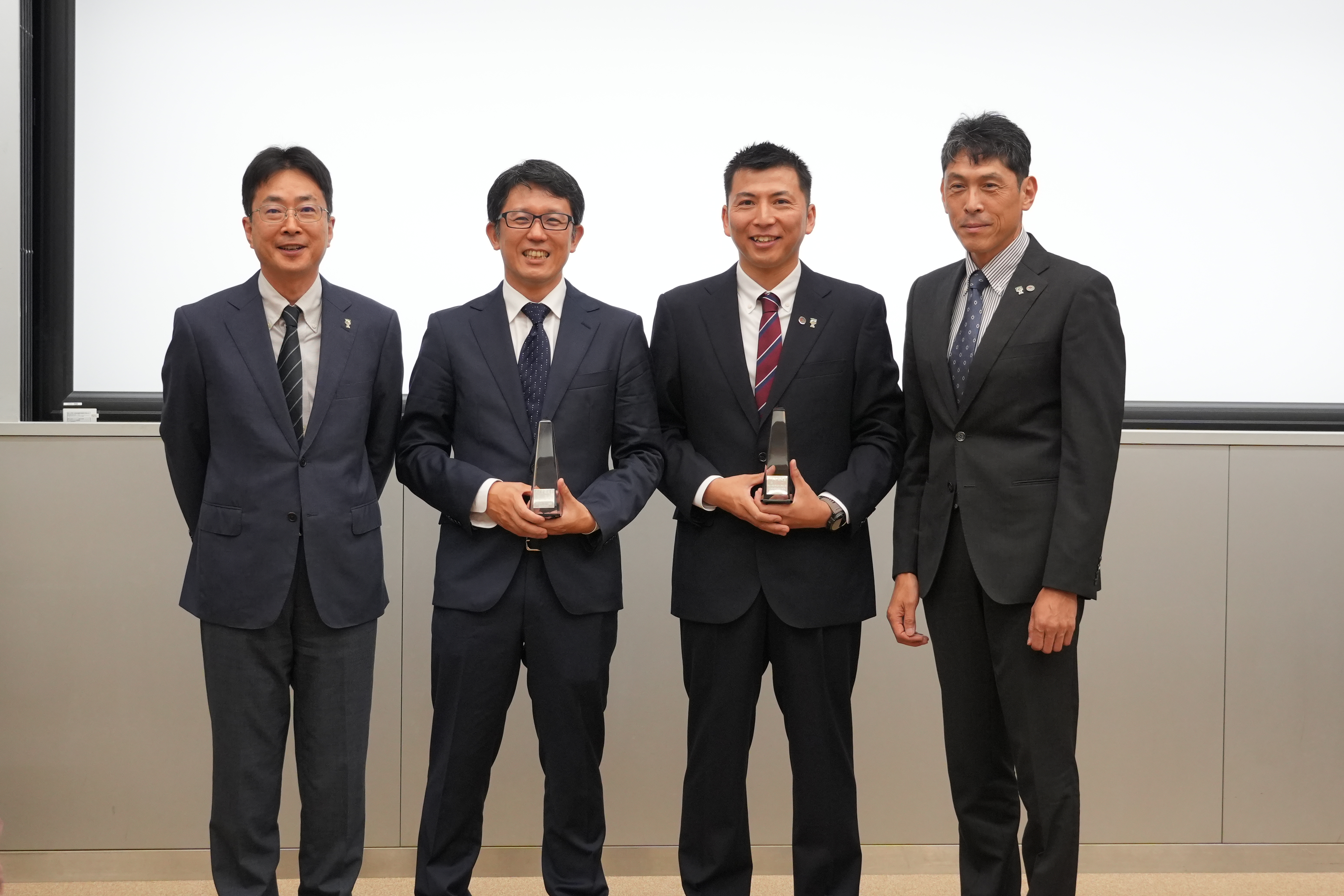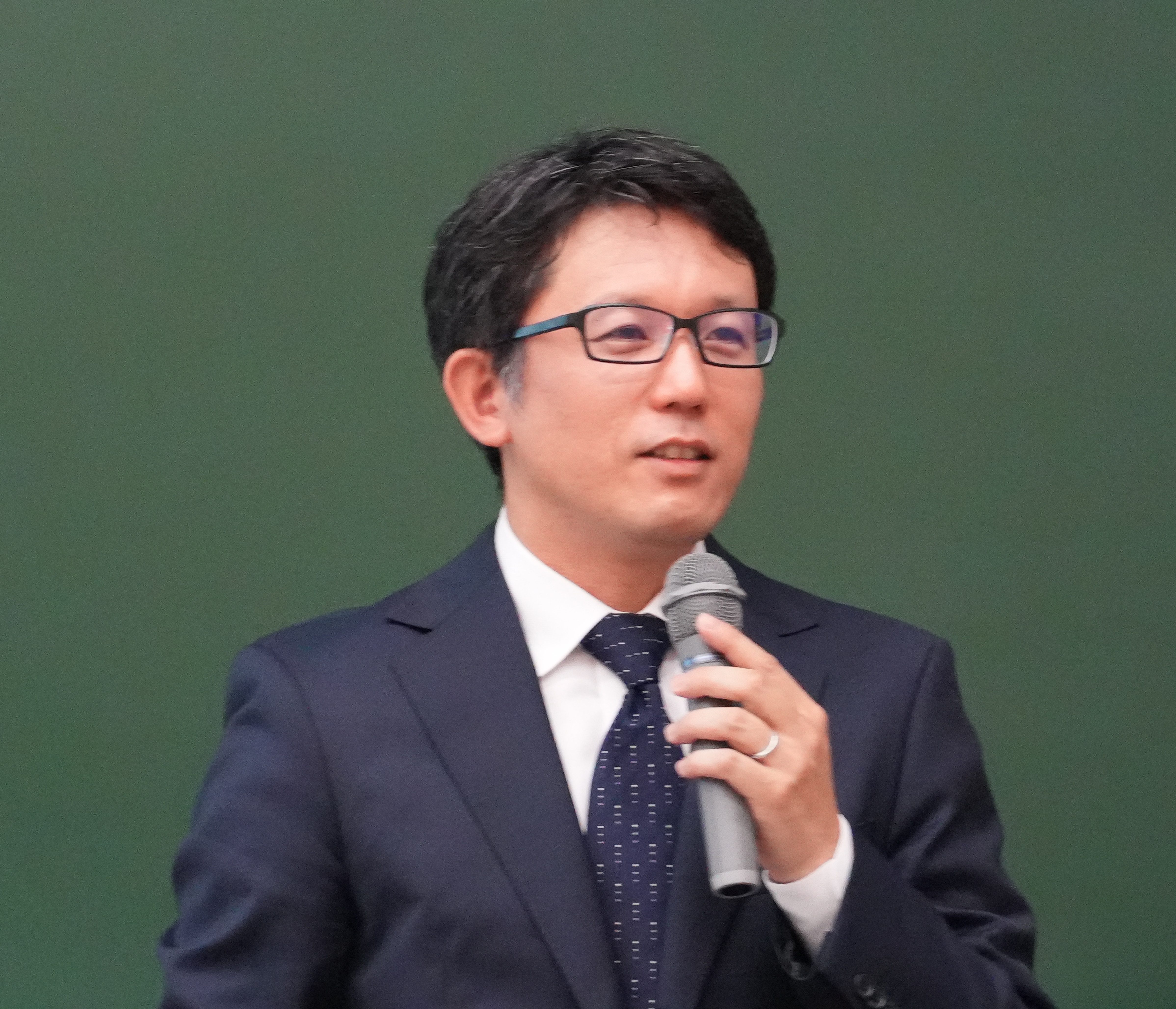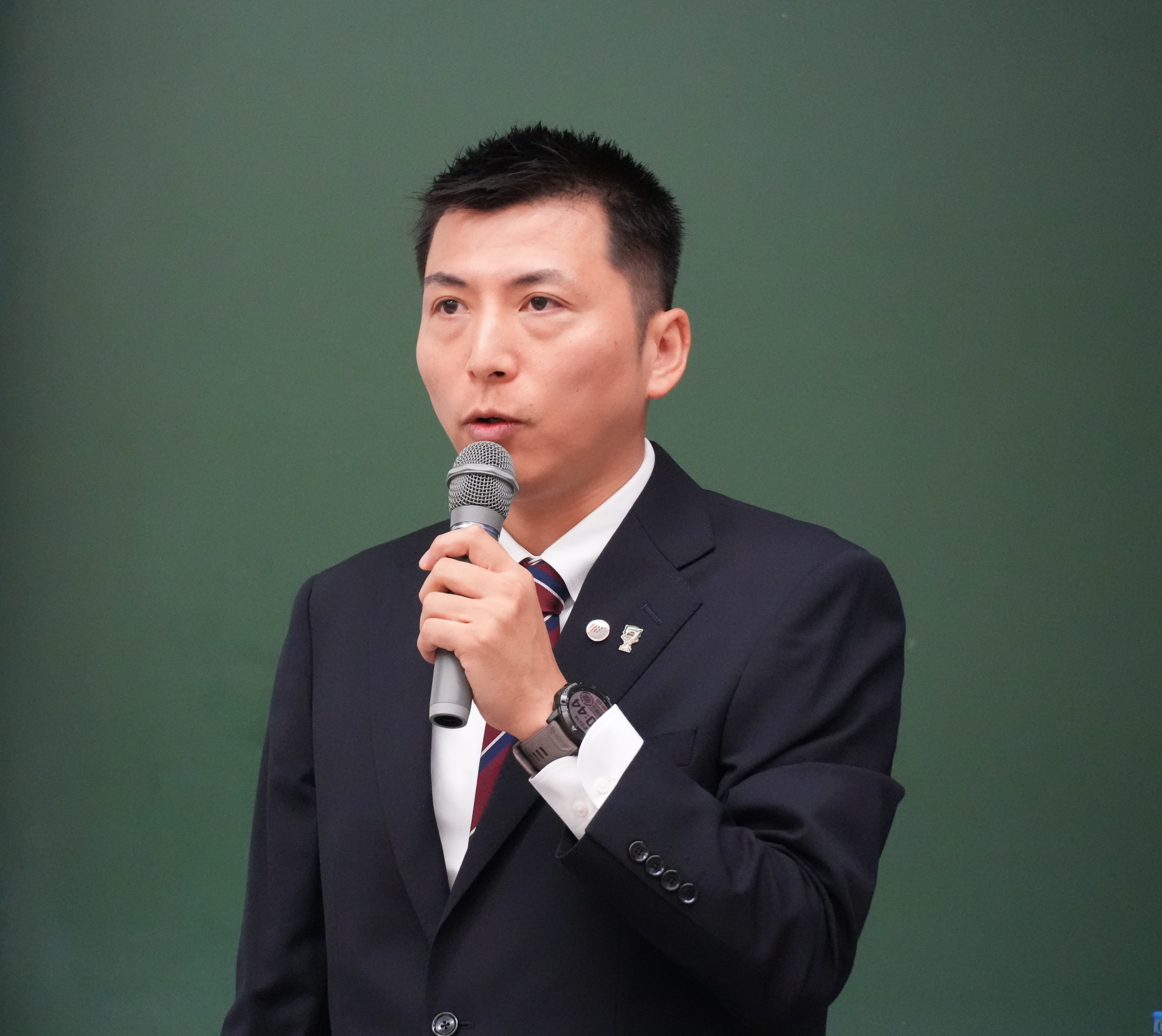Events & News
FY2025 Bioscience Division Award Ceremony was held
Associate Professor Tatsuaki Goh (Laboratory of Plant Developmental Signaling) and Assistant Professor Makoto Shirakawa (Laboratory of Plant Stem Cell Regulation and Floral Patterning) received the FY2025 Bioscience Division Award. The award ceremony was held on August 22 at the Biological Science Seminar Hall, where Dr. Goh and Dr. Shirakawa gave lectures to many students and staff members.

〇Awardee
Associate Professor Tatsuaki Goh (Laboratory of Plant Developmental Signaling)

〇Research Title and Abstract
-Research Title-
Exploring Root Growth Mechanisms through Quantitative Analysis of Cellular Dynamics
-Abstract-
Plant roots dynamically grow and navigate through the soil, a process critical for plant survival and resource acquisition. Root growth relies on coordinated cell division and elongation in the root tip, regulated by both intrinsic programs and external environmental cues. However, the precise cellular dynamics that drive root growth remain poorly characterized. This is largely due to the technical difficulty of capturing these dynamic processes at the growing root tip.
In this talk, I will present our recent efforts to elucidate the cellular basis of root growth in Arabidopsis thaliana through quantitative live imaging. We developed a custom imaging system with a horizontal optical path and motion tracking to precisely follow growing root tips over time. This system allowed us to quantitatively characterize how cell division and elongation coordinate to drive directional growth. Our findings provide fundamental insights into the cellular coordination underlying root growth and shed light on how it adapts to changing environmental conditions.
〇Awardee
Assistant Professor Makoto Shirakawa (Laboratory of Plant Stem Cell Regulation and Floral Patterning)

〇Research Title and Abstract
-Research Title-
Transcriptional control and manipulation of cell fate decisions in plants
-Abstract-
Plants, being sessile organisms, have evolved distinct strategies to defend themselves against biotic threats and adapt to environmental challenges. These survival strategies are largely governed by master transcription factors and their associated epigenetic modifications, which orchestrate gene expression programs underlying developmental and physiological responses.
A comprehensive and high-resolution understanding of the functions of transcription factors is essential for elucidating the molecular basis of plant survival and for enabling targeted manipulation of these regulatory systems.
Over the past five years, my research has focused on two major objectives: (1) elucidating the molecular mechanisms by which master transcription factors and their downstream regulatory networks specify distinct cell fates, and (2) manipulating the epigenomic states of master transcription factors using novel bioactive small molecules.
In this presentation, I will highlight our recent discoveries that reveal how master transcription factors coordinate cell fate specification in plants and how their epigenomic regulation can be modulated by chemical approaches. I will also outline future directions aimed at integrating transcriptional and epigenetic control to enable rational manipulation of plant development and adaptation.
References
1) Shirakawa et al., 2025. Nature Plants
2) Otsuka et al., 2025. Communications Biology
(August 28, 2025)
